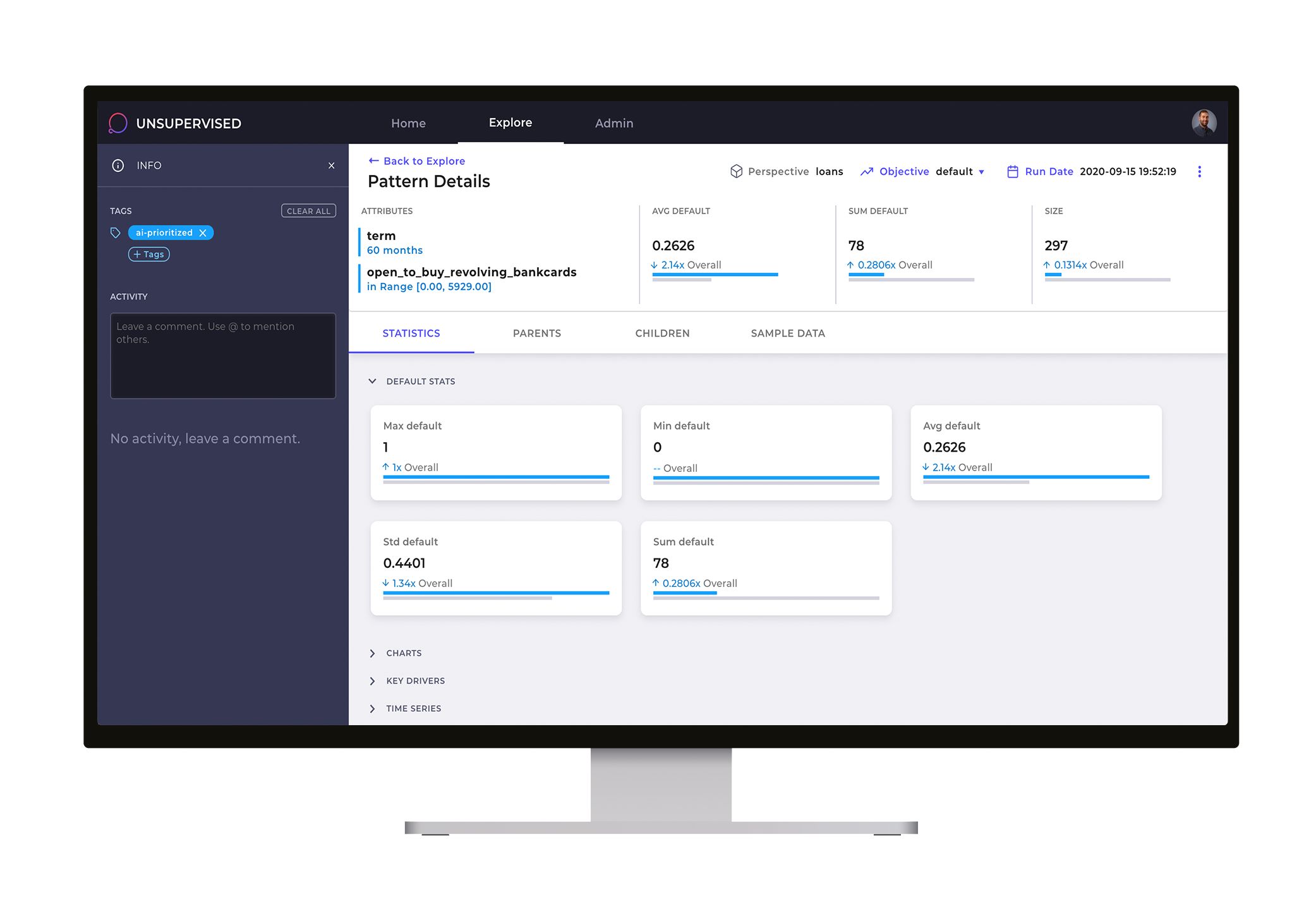Banking and financial services are integrated into every part of society — from corporate financing to mortgage lending. These institutions touch all walks of life.
The volume of data grows exponentially each year, and banks and other financial institutions represent one of the most data intensive sectors. Due to rapidly changing customer expectations and the emergence of smaller fintech players, the need to find insights from this rapidly expanding data is the key to holding a competitive advantage.
But while these financial institutions have advanced in data collection, efforts to actually analyze the data rarely go beyond scratching the surface. Nearly 80% of all collected data is unstructured, yet most organizations are not equipped with the skills or technology to even begin extracting insight from it.
Unsupervised’s Data Intelligence Platform goes beyond the typical ways banks and providers look at their data. Rather than providing dashboards on top of structured data, our platform surfaces actionable insights derived from all of your data, no matter the structure or complexity.
Let’s take a look at an example.
The Insights Are in the Details
Let’s look at this example of a lending agency. In this case we’re reviewing data from Lending Club around credit checks and history.
Because our platform is based on Unsupervised Machine Learning, we are able to test against a near infinite set of AI-generated hypotheses revealing statistically significant patterns in the data. In this example, you’ll see that Unsupervised detected a spike in default rate amongst customers that have between $0 and $5,929 in available credit (open_to_buy_revolving_bankcards) on 60-month term loans.

Since the spike occurs among customers that are on a specific loan term with a limited range of available credit, we can take action on the insight. We can improve how to classify and process risk factors for loan applications.
Additionally, this range of available credit was actually an auto-generated feature of a structured column. Typically, this kind of range would be arbitrarily defined or not used at all with most forms of analytics. But the Unsupervised platform tests the significance of every possible range and surfaces those that most affect your business.
Now that the pattern is clear, your risk management team can act on it, implementing new policies and practices for loan application reviews. The seeming simplicity of this insight is actually the outcome of embracing the complexity of the raw data. The more information that can be fed into the AI, the more powerful the insights that come out of it.
And these are the types of insights that would be challenging to uncover with traditional BI tools.
To find the pattern in this example, an analyst would first need to create a dashboard based on this data — no trivial task. Once completed, the analyst would have to filter through every possible combination of attributes and values of available credit to find this insight. It’s hard to imagine someone finding a pattern like this applying so many layers of filters.
It’s even harder to imagine finding a pattern like this a second time. Fast forward a week, or month, or even a year: Unsupervised will run against your updated data and find new unique patterns just like this to act on. In BI, most would be constrained to their previous dashboard and having to dig through every possible filter combination again. In many cases, they would be required to build entirely new reporting to reflect additional data that needs analysis.
Unsupervised ensures there is always actionable intelligence at your fingertips. And that’s how our financial services customers are able to turn complex data into a competitive advantage.








